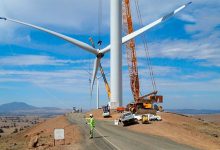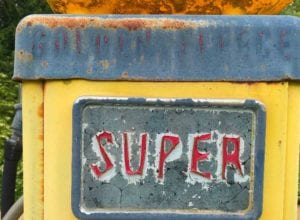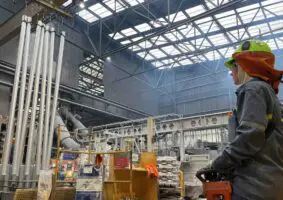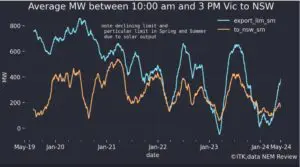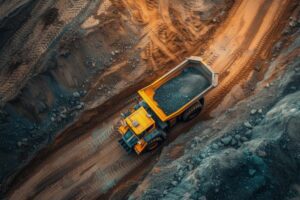The latest Business Outlook report from Deloitte Access Economics shows renewable energy underpinning investment in Australia’s construction and engineering sectors, while also undermining the export market for thermal coal.
The Business Outlook report provides a snapshot of the Australian economy, highlighting where things are going well, and where things are starting to slow down.
The continued emergence of the global renewable energy sector looks to be having both positive and negative impacts on the Australian economy, as new projects locally has underpinned growth in construction and engineering activities, the report noted.
It also said the global shift away from fossil fuels is significantly denting the performance of the Australian resources sector, as overseas markets cool on Australian coal and gas markets.
Large-scale renewable energy projects in both South Australia and Queensland have “defied a tricky political backdrop” to prop up investment in construction and engineering, as activity in some parts of the resources sector begin to slow, according to Deloitte.
Most of the recent investment in the Australian electricity sector has been driven by new renewable energy projects, particularly large-scale solar and wind farms. Deloitte sees around three-quarters of the generation projects in the development pipeline being either solar or wind projects, amounting to more than the 6,000MW of new renewables projects being committed.
Federal Government commitment to the 2,000MW expansion of the Snowy 2.0 scheme also represents a significant portion of the development pipeline. Investment has returned to the sector after it came to a standstill following the election of the Abbott Government in 2013, but the market will still be wary of a post-RET energy market after 2020.
It has largely been private investments in new renewable energy projects that have been the driver of investments in electricity projects across Australia, defying an investment environment that offers little by way of stable or effective energy policy from the Federal Government.
Deloitte cited the completion of the $400 million Lilyvale solar farm and the $200 million Darling Downs solar farm as projects that have supported engineering construction activity in Queensland, which has been a welcome boost in a region that has been deflated due to a winding down of LNG infrastructure related construction.
Renewables have driven double-digit growth in construction activities in South Australia, as action taken to sure-up the reliability of the South Australian electricity system, primarily through investments in wind and energy storage, has attracted investment.
Tasmania is also a significant beneficiary of new renewable energy projects, with the utilities sector representing a third of all engineering works in Tasmania.
This has been lead by the $300 million Cattle Hill and $280 million Granville Harbour wind farms, with each of these projects are dependent on the completion of a second undersea interconnector between Tasmania and the mainland.
TasNetworks recently completed its initial feasibility study for the Marinus Link, which would join the existing Basslink, that provides Tasmania’s connection to the rest of the National Electricity Market, securing $56 million in funding to progress the project to the next stages of development.
The report also confirms fears that the Adani Carmichael Coal mine is a crucial proxy test for Australia’s coal mining sector, with the project on the cusp of commencing construction. If Adani is ultimately successful in getting the project off the ground, there are up to six additional projects coal projects planned for the Galilee that Deloitte sees as being likely to follow.
However, Deloitte also echoed concerns that have been raised around the future prospects for Australia’s thermal coal exports. Coal exports face combined challenges from an oversupplied market, driven by growth in Indonesian exports, and diminishing demand from major customers like Japan, who are shifting towards lower-emissions sources of energy.
Deloitte highlighted that these pressures are already having a significant impact on international prices for thermal coal, with prices falling from $120 a tonne to $70 a tonne over the last 12-months.
Japan is the world’s largest importer of coal, and receives 45% of the coal exported from NSW, but has cancelled two-thirds of the pipeline of new coal power stations.
“A number of coal-fired projects in Japan – the world’s largest importer of coal – have recently been cancelled. The restart of nuclear power stations and cost-competitive renewables remain key risks to the outlook for thermal coal,” Deloitte said in its report.
The same warning was also sounded for Australian gas exports with growing global supplies increasing competition for customers. Prices in the Asian gas market are also pegged to oil prices, which have been subdued in anticipation of a glut in supplies predicted by the International Energy Agency.
None of these are new observations for the Australian energy sector, with industry participants calling on the Federal Government to set a direction for energy policy in Australia, out of fear that doing nothing to stimulate new investment is the absolute worst case scenario.
As the Deloitte report highlights, it has been State governments that have been able to establish an environment that allows for projects to go ahead, providing sufficient security in policy for projects to go ahead.
Hopefully, we will see the Federal Government come back to the negotiating table, to develop a national energy policy, that itself says it wants to see established, but appears keen to avoid talking about.

